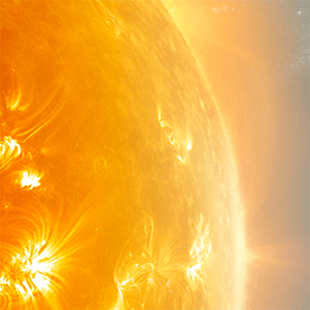Earth Science Standards Alignments
Earth Science Standards Alignments
Grouped by Disciplines
Printer Friendly: Earth Science Standards Alignments (PDF)
Earth and Space Science | ||
Grade | Standard | NGSS PE (link) |
|---|---|---|
2 | Use information from several sources to provide evidence that Earth events can occur quickly or slowly. | |
3 | Obtain and combine information to describe climates in different regions of the world. | |
3 | Make a claim about the merit of a design solution that reduces the impacts of a weather-related hazard. | |
4 | Make observations and/or measurements to provide evidence of the effects of weathering or the rate of erosion by water, ice, wind, or vegetation | |
4 | Analyze and interpret data from maps to describe patterns of Earth’s features. | |
4 | Generate and compare multiple solutions to reduce the impacts of natural Earth processes on humans. | |
5 | Develop a model using an example to describe ways the geosphere, biosphere, hydrosphere, and/or atmosphere interact. | |
5 | Describe and graph the amounts of saltwater and fresh water in various reservoirs to provide evidence about the distribution of water on Earth. | |
5 | Obtain and combine information about ways individual communities use science ideas to protect the Earth’s resources and environment. | |
Middle School | Construct an explanation based on evidence for how geoscience processes have changed Earth's surface at varying time and spatial scales. | |
Middle School | Develop a model to describe the cycling of water through Earth’s systems driven by energy from the sun and the force of gravity. | |
Middle School | Develop and use a model to describe how unequal heating and rotation of the Earth cause patterns of atmospheric and oceanic circulation that determine regional climates. | |
Middle School | Construct a scientific explanation based on evidence for how the uneven distributions of Earth's mineral, energy, and groundwater resources are the result of past and current geoscience processes. | |
Middle School | Analyze and interpret data on natural hazards to forecast future catastrophic events and inform the development of technologies to mitigate their effects. | |
Middle School | Apply scientific principles to design a method for monitoring and minimizing a human impact on the environment | |
Middle School | Construct an argument supported by evidence for how increases in human population and per-capita consumption of natural resources impact Earth's systems. | |
Middle School | Ask questions to clarify evidence of the factors that have caused the rise in global temperatures over the past century. | |
High School | Apply scientific reasoning and evidence from ancient Earth materials, meteorites, and other planetary surfaces to construct an account of Earth’s formation and early history. | |
High School | Analyze geoscience data to make the claim that one change to Earth's surface can create feedbacks that cause changes to other Earth systems. | |
High School | Use a model to describe how variations in the flow of energy into and out of Earth’s systems result in changes in climate. | |
High School | Develop a quantitative model to describe the cycling of carbon among the hydrosphere, atmosphere, geosphere, and biosphere. | |
High School | Construct an explanation based on evidence for how the availability of natural resources, occurrence of natural hazards, and changes in climate have influenced human activity. | |
High School | Analyze geoscience data and the results from global climate models to make an evidence-based forecast of the current rate of global or regional climate change and associated future impacts to Earth's systems. | |
High School | Use a computational representation to illustrate the relationships among Earth systems and how those relationships are being modified due to human activity. |
Life Science | ||
Grade | Standard | NGSS PE (link) |
|---|---|---|
K | Use observations to describe patterns of what plants and animals (including humans) need to survive. | |
3 | Make a claim about the merit of a solution to a problem caused when the environment changes and the types of plants and animals that live there may change. | |
Middle School | Construct a scientific explanation based on evidence for how environmental and genetic factors influence the growth of organisms. | |
Middle School | Construct a scientific explanation based on evidence for the role of photosynthesis in the cycling of matter and flow of energy into and out of organisms. | |
Middle School | Analyze and interpret data to provide evidence for the effects of resource availability on organisms and populations of organisms in an ecosystem. | |
Middle School | Construct an argument supported by empirical evidence that changes to physical or biological components of an ecosystem affect populations. | |
Middle School | Evaluate competing design solutions for maintaining biodiversity and ecosystem services. | |
High School | Use mathematical representations to support and revise explanations based on evidence about factors affecting biodiversity and populations in ecosystems of different scales. | |
High School | Develop a model to illustrate the role of photosynthesis and cellular respiration in the cycling of carbon among the biosphere, atmosphere, hydrosphere, and geosphere. | |
High School | Design, evaluate, and refine a solution for reducing the impacts of human activities on the environment and biodiversity. | |
High School | Construct an explanation based on evidence for how natural selection leads to adaptation of populations. |































